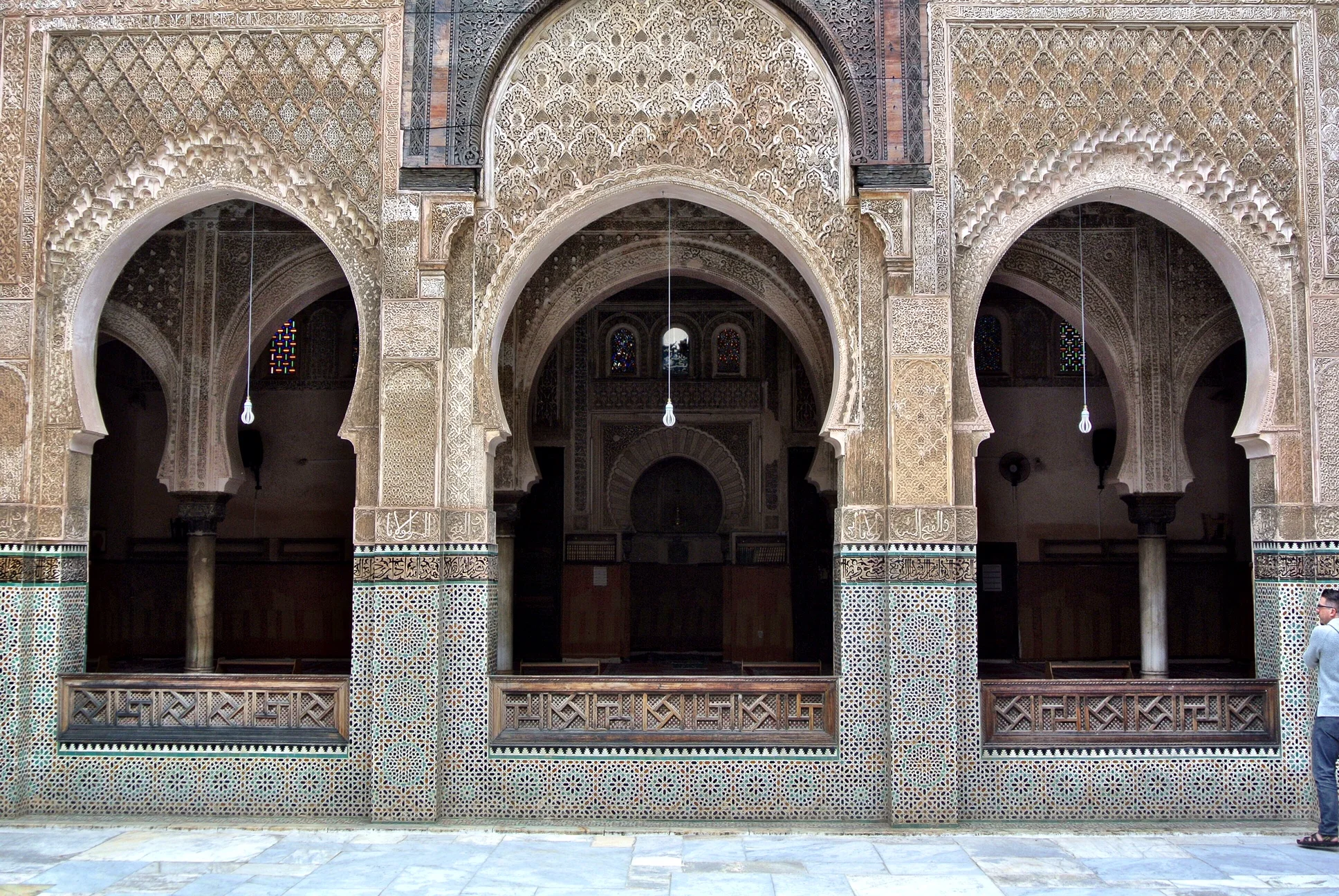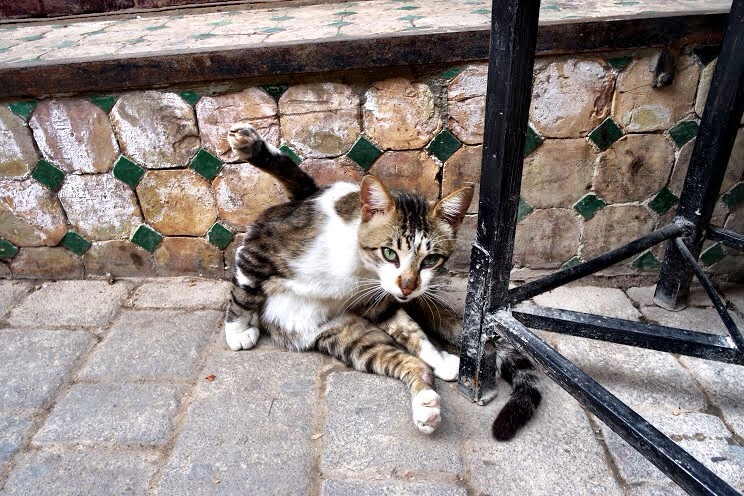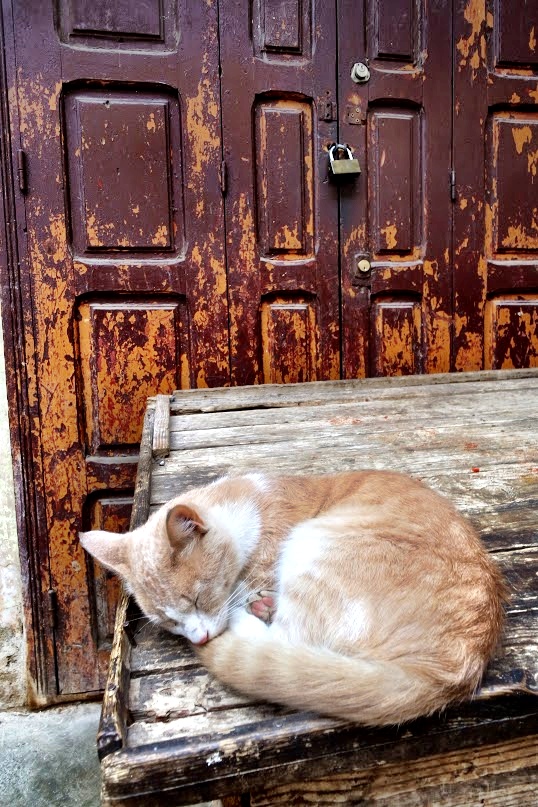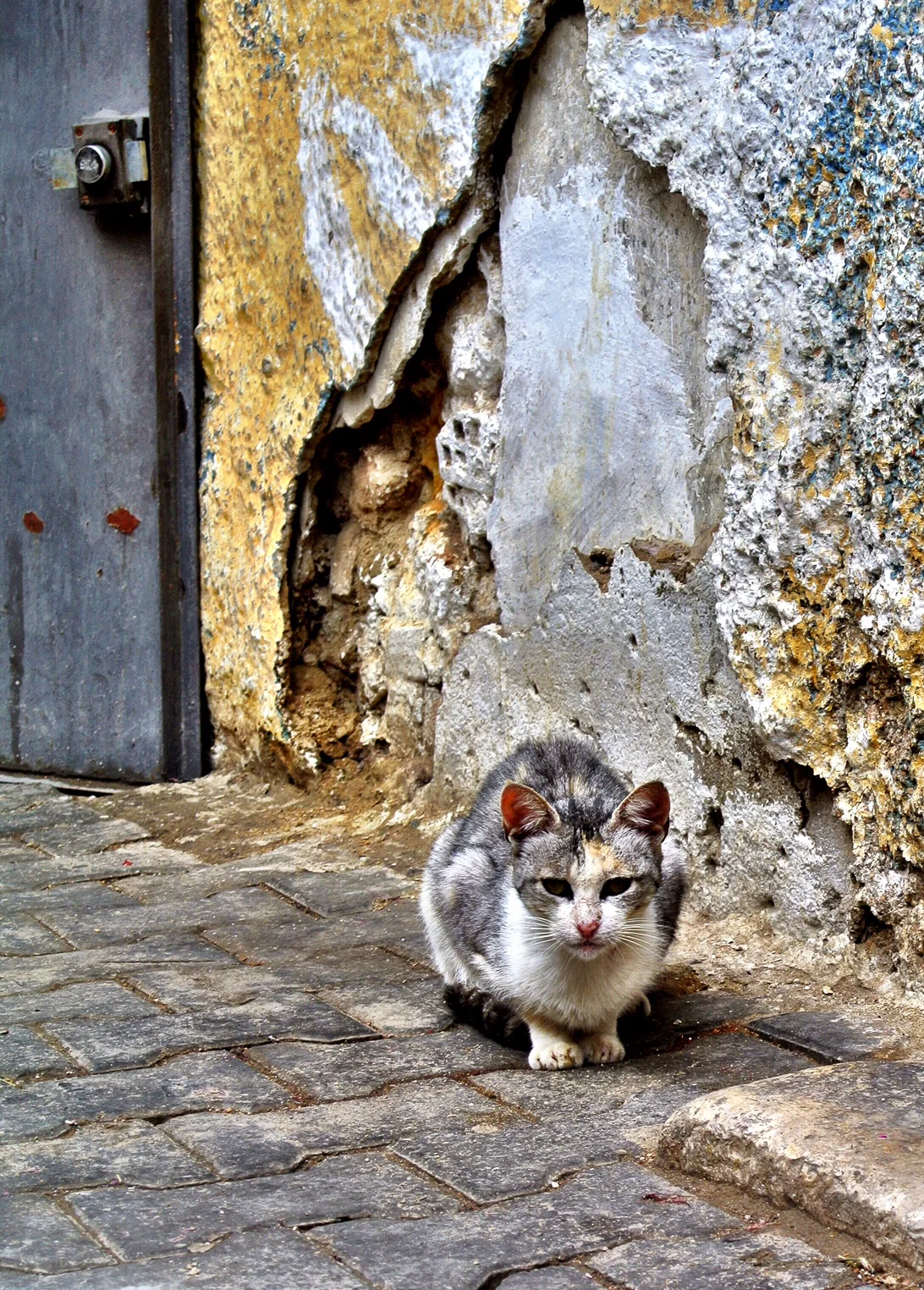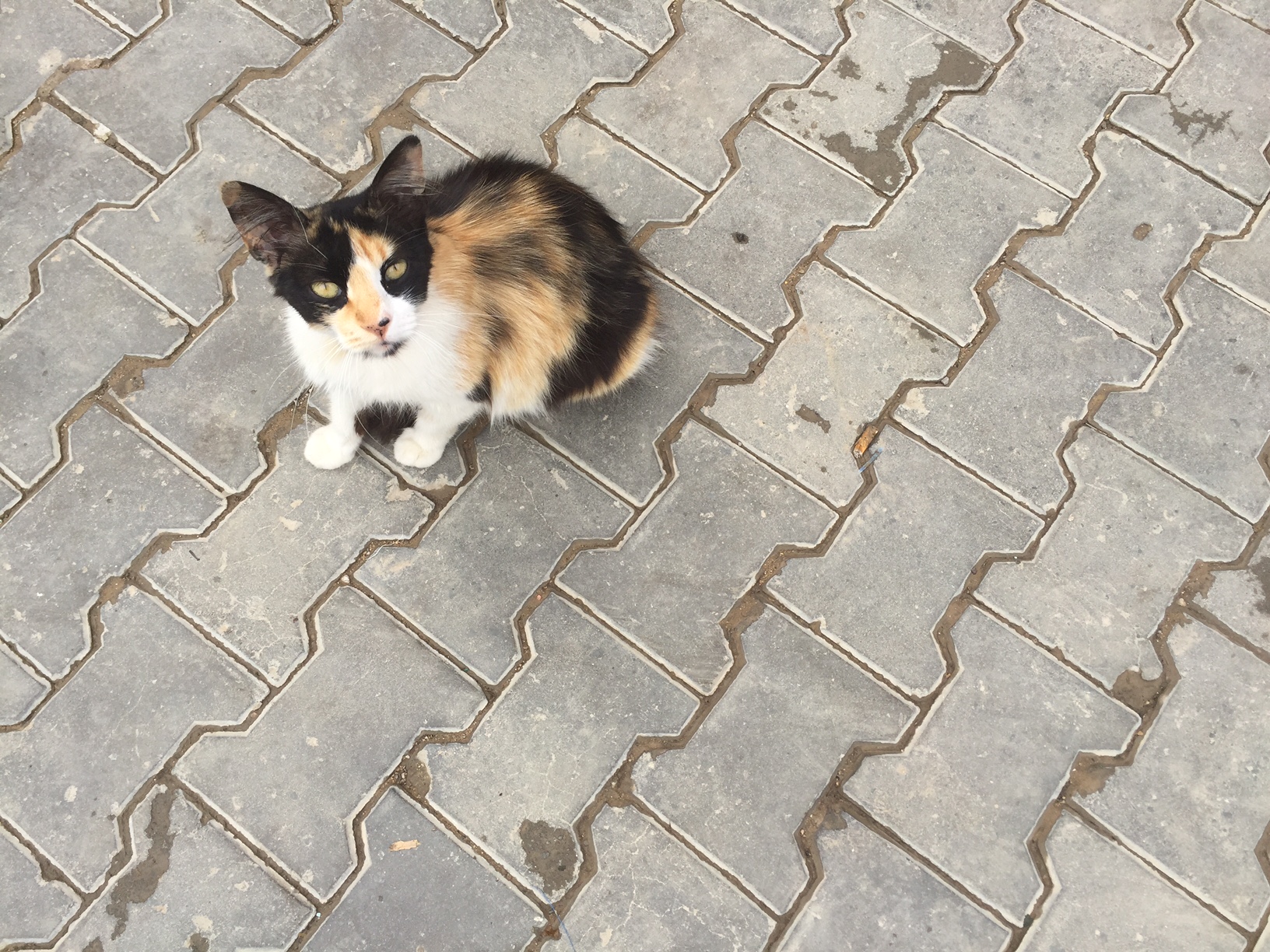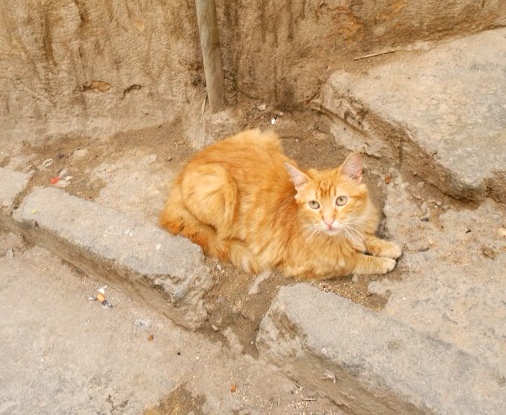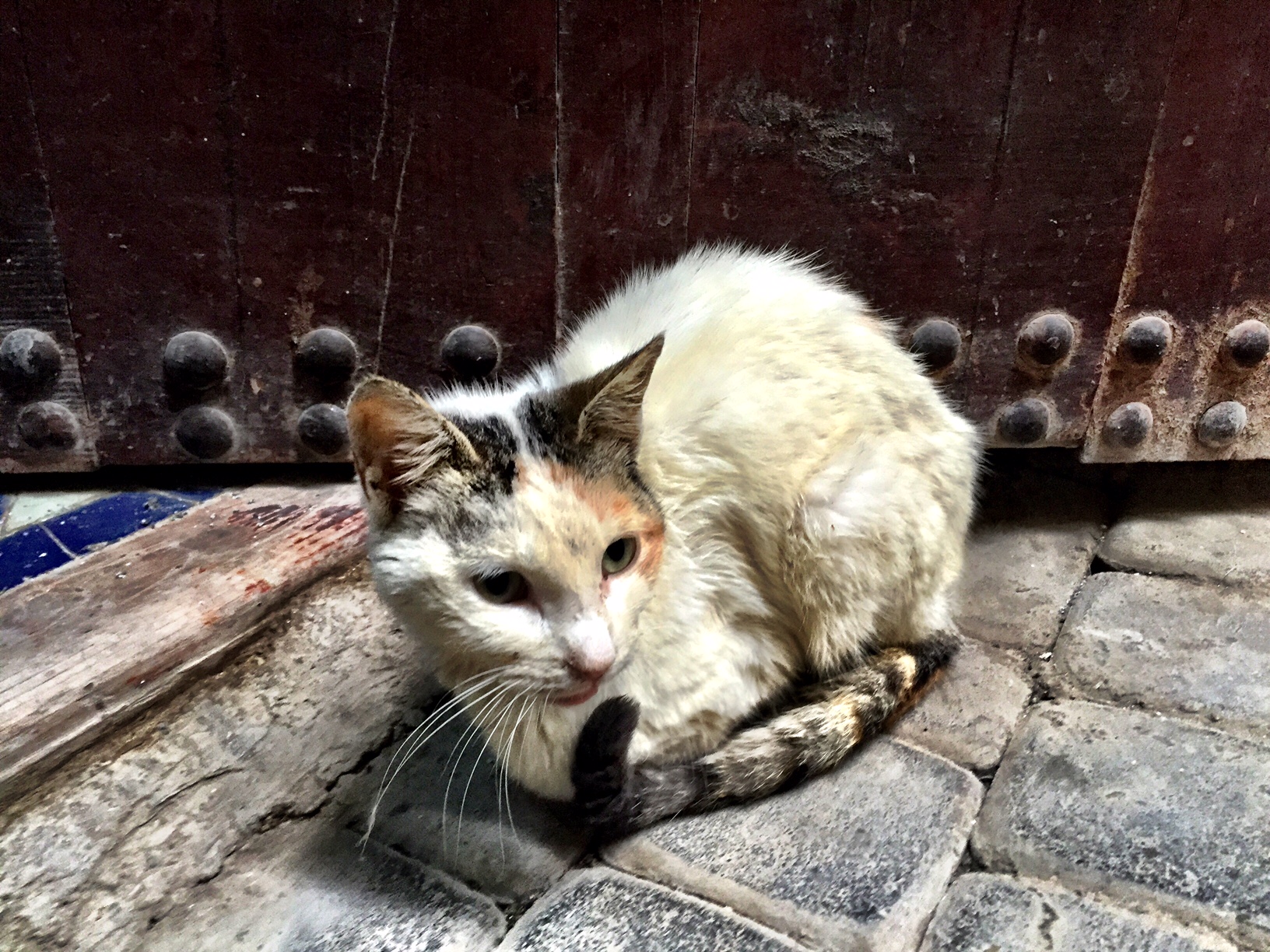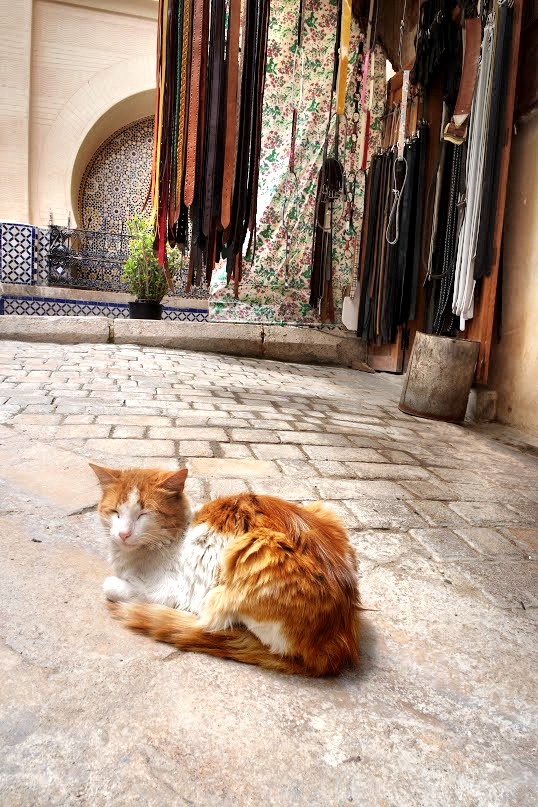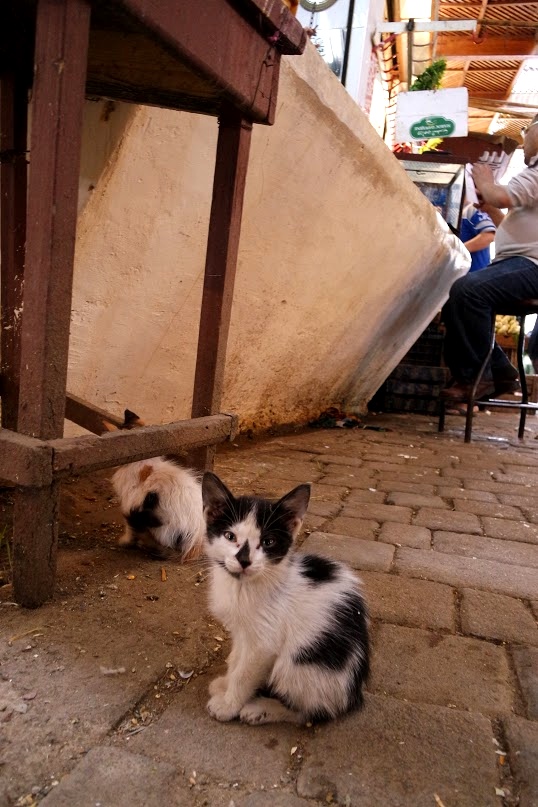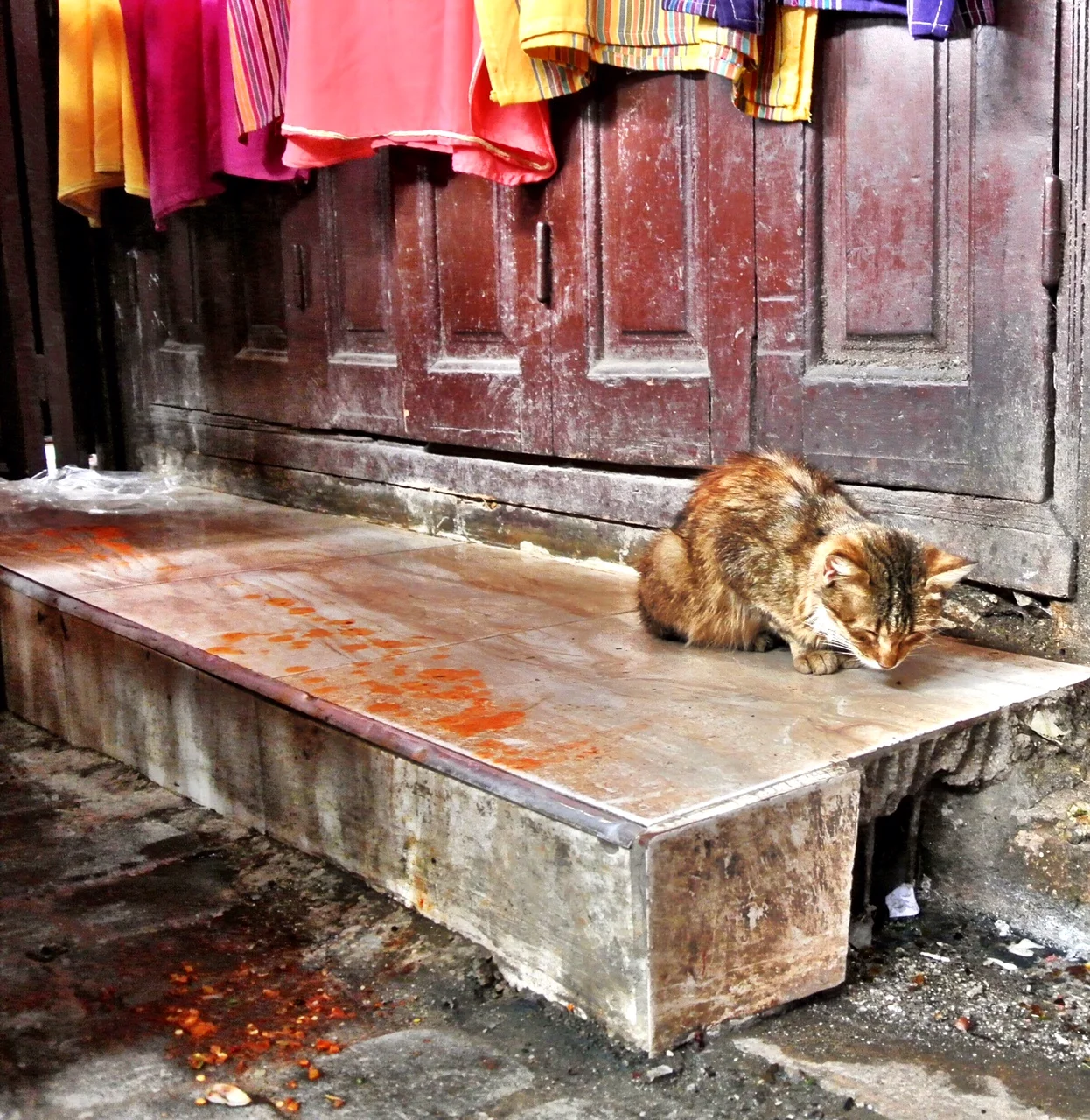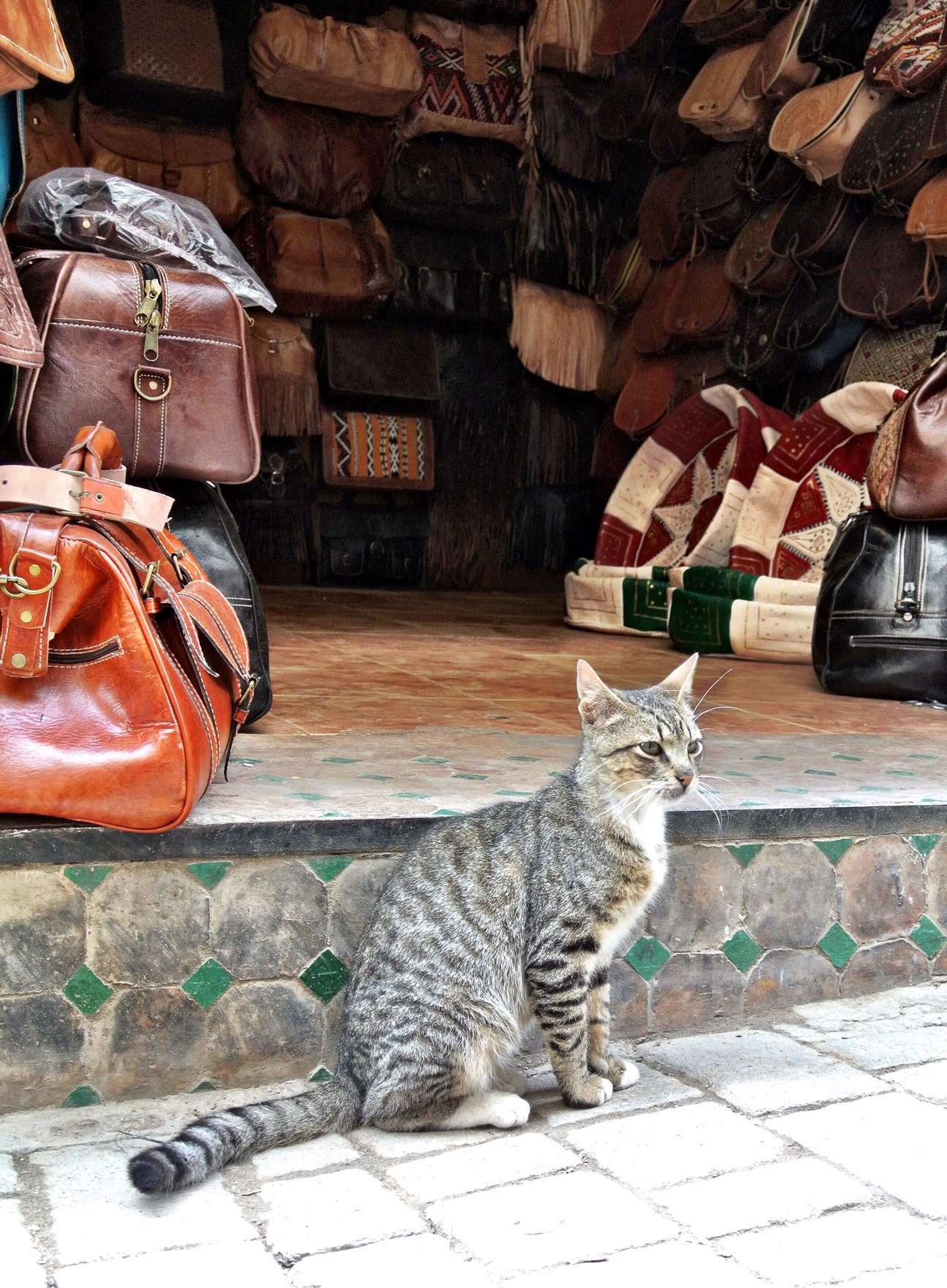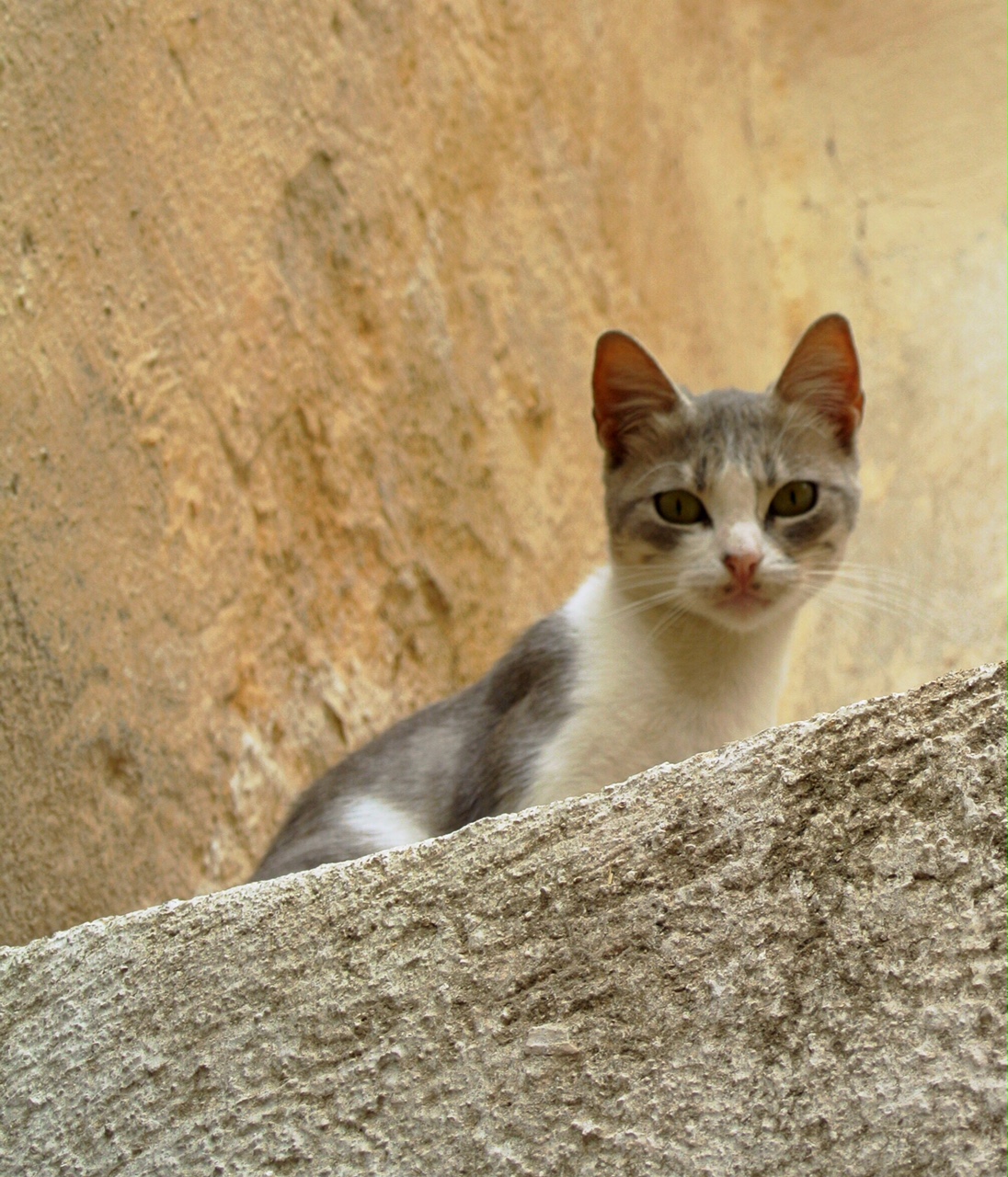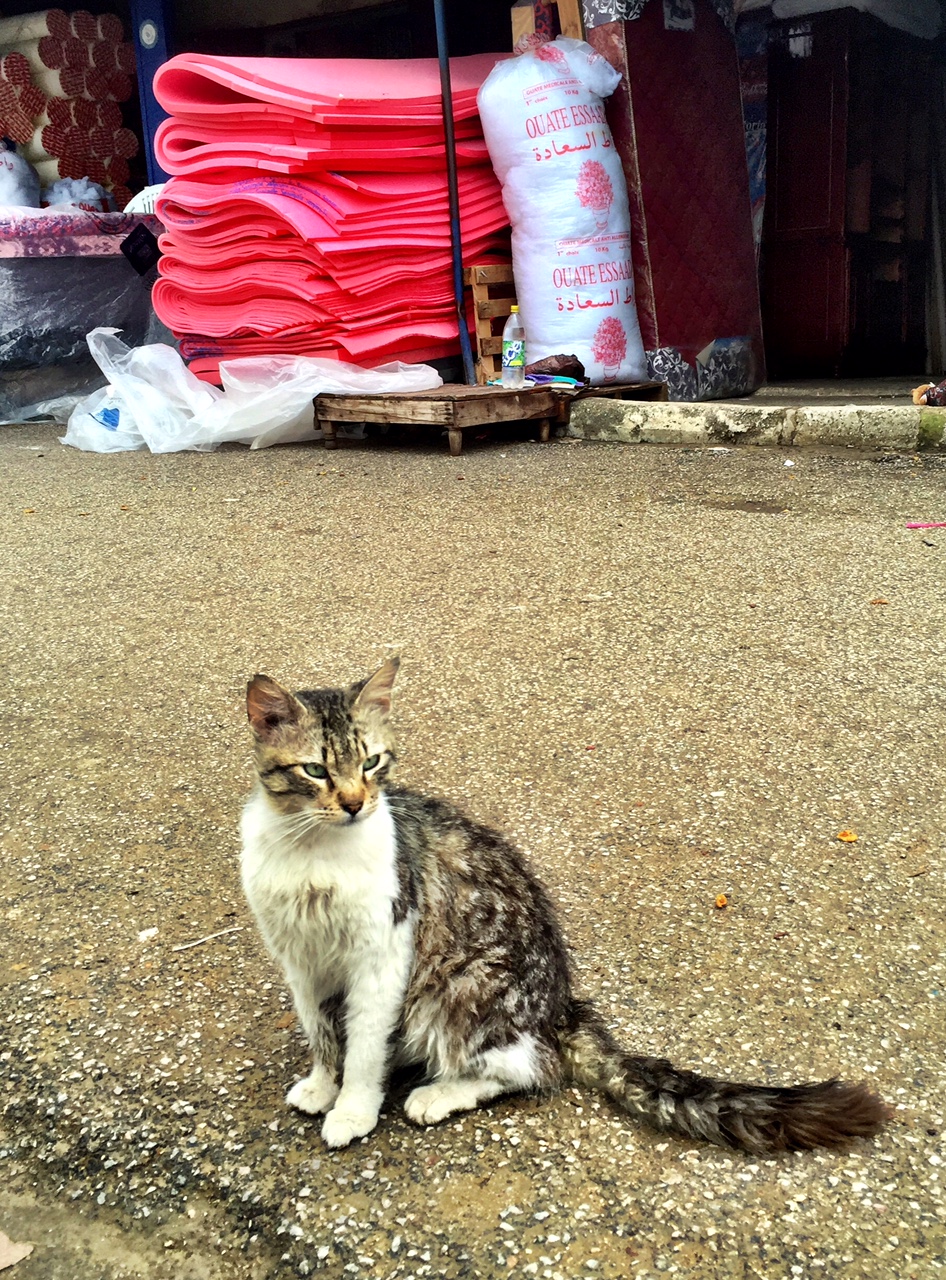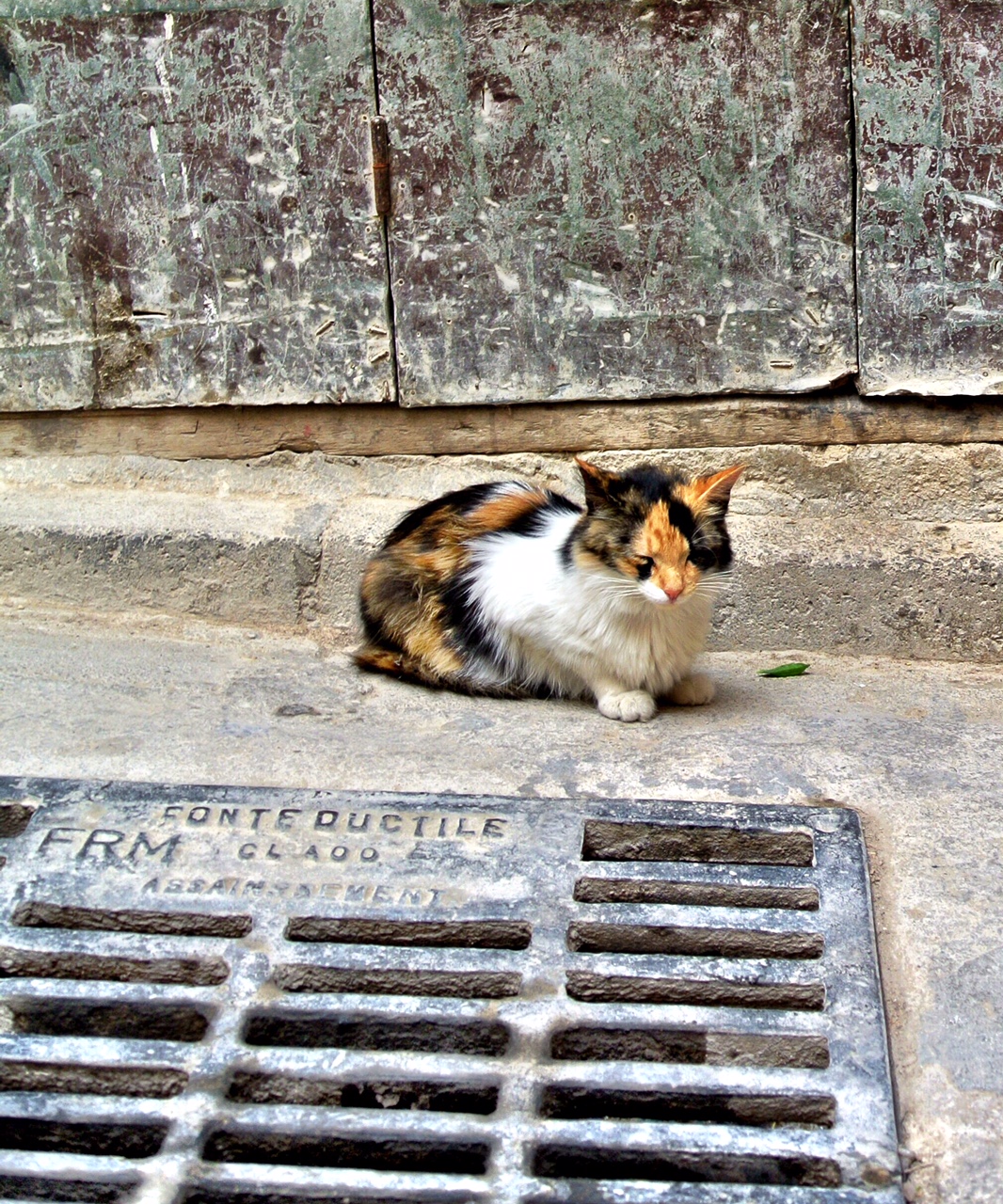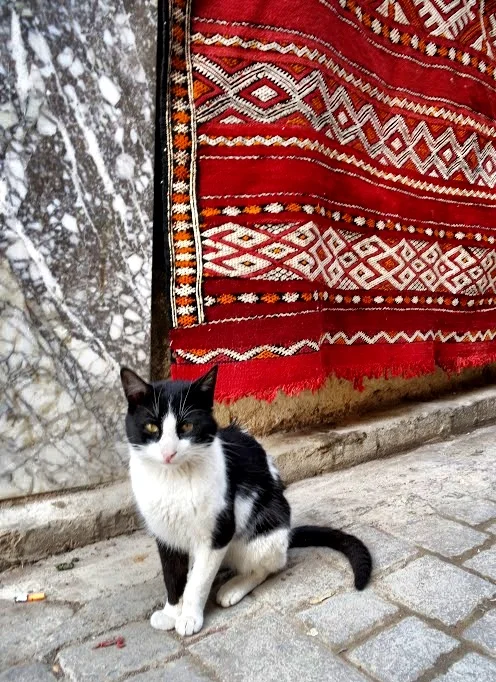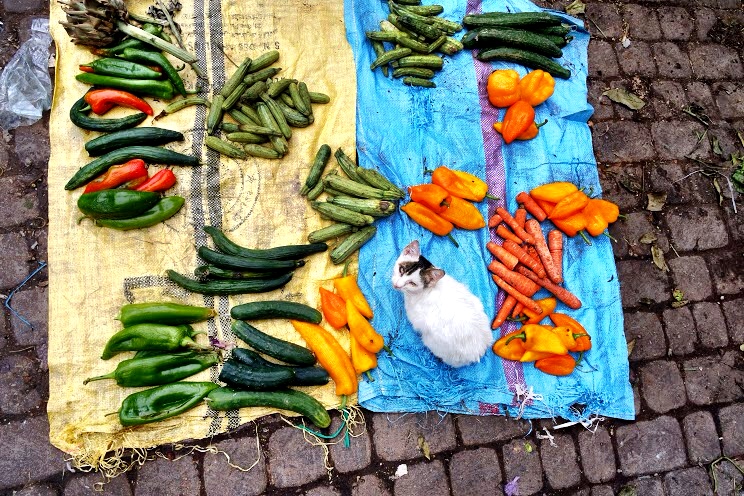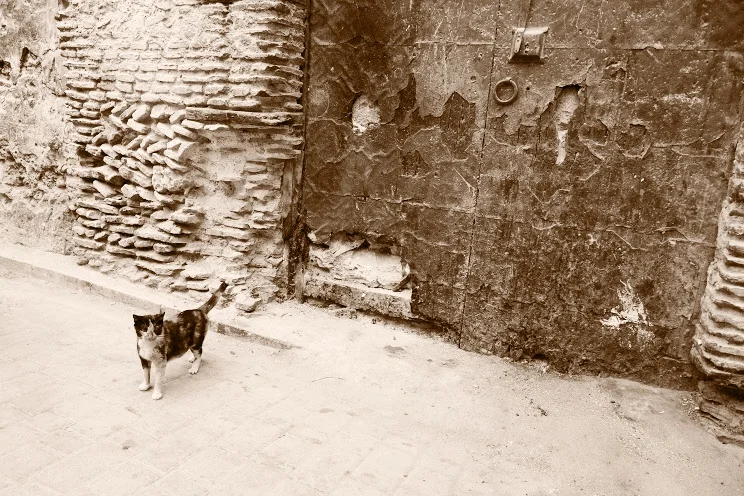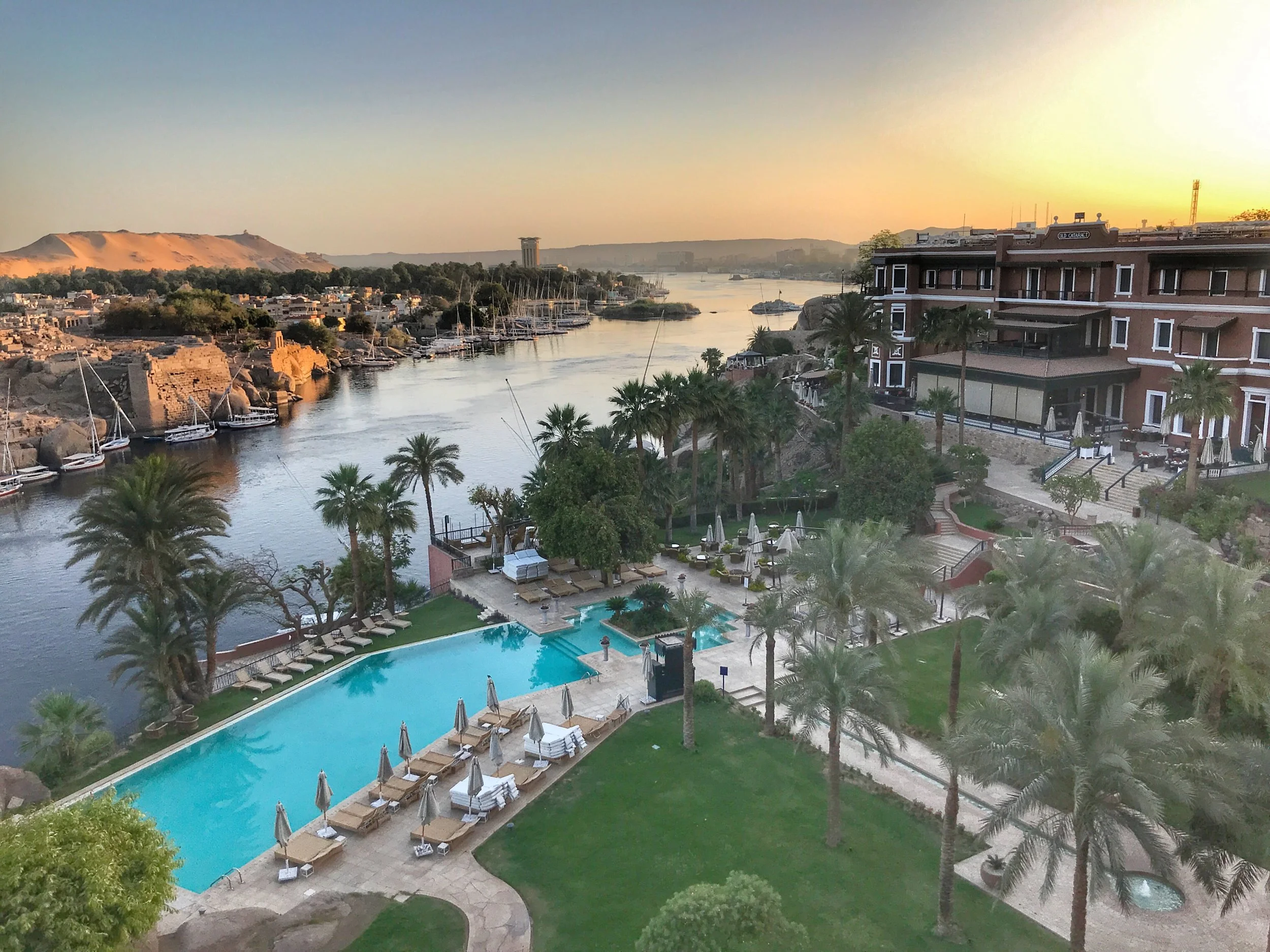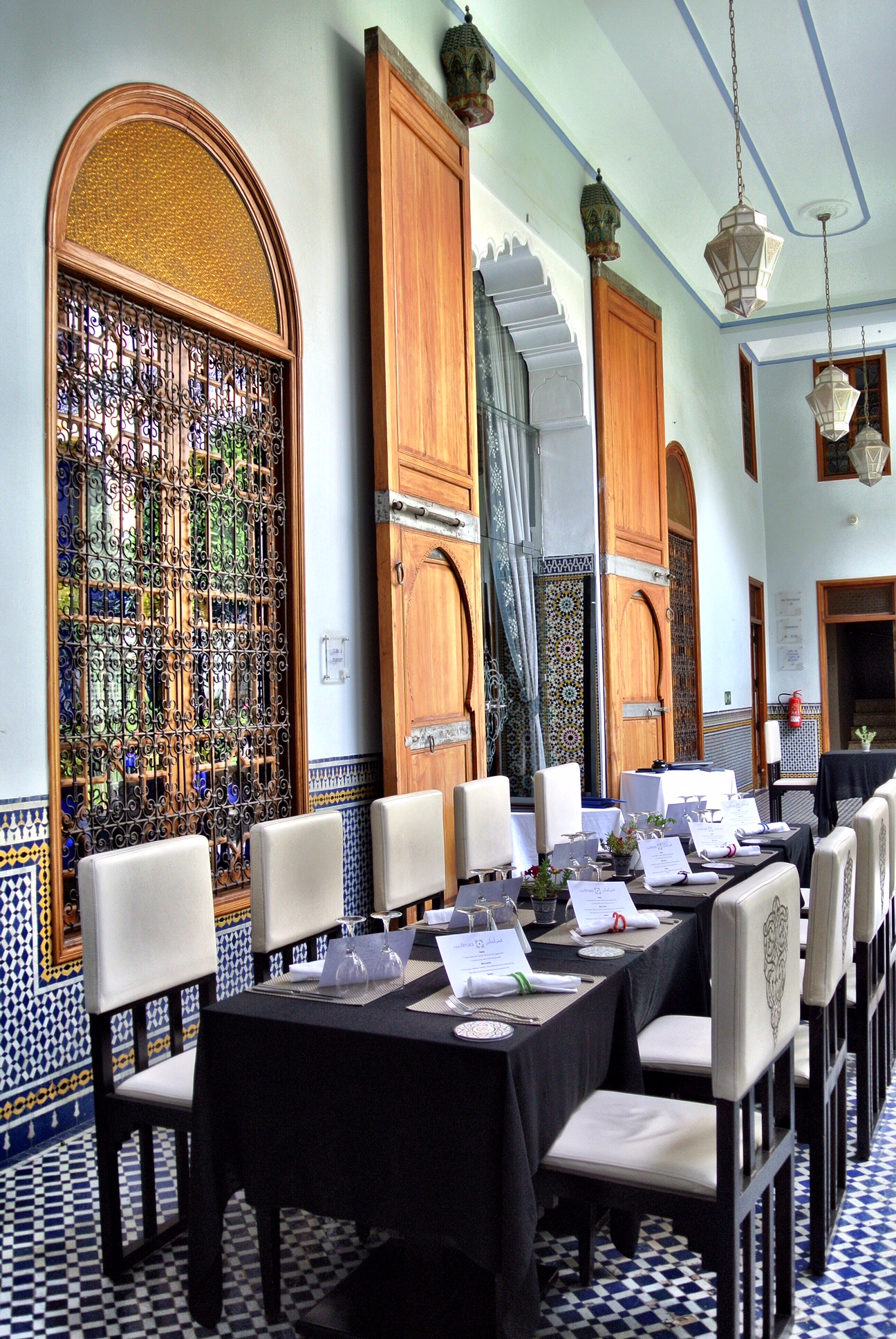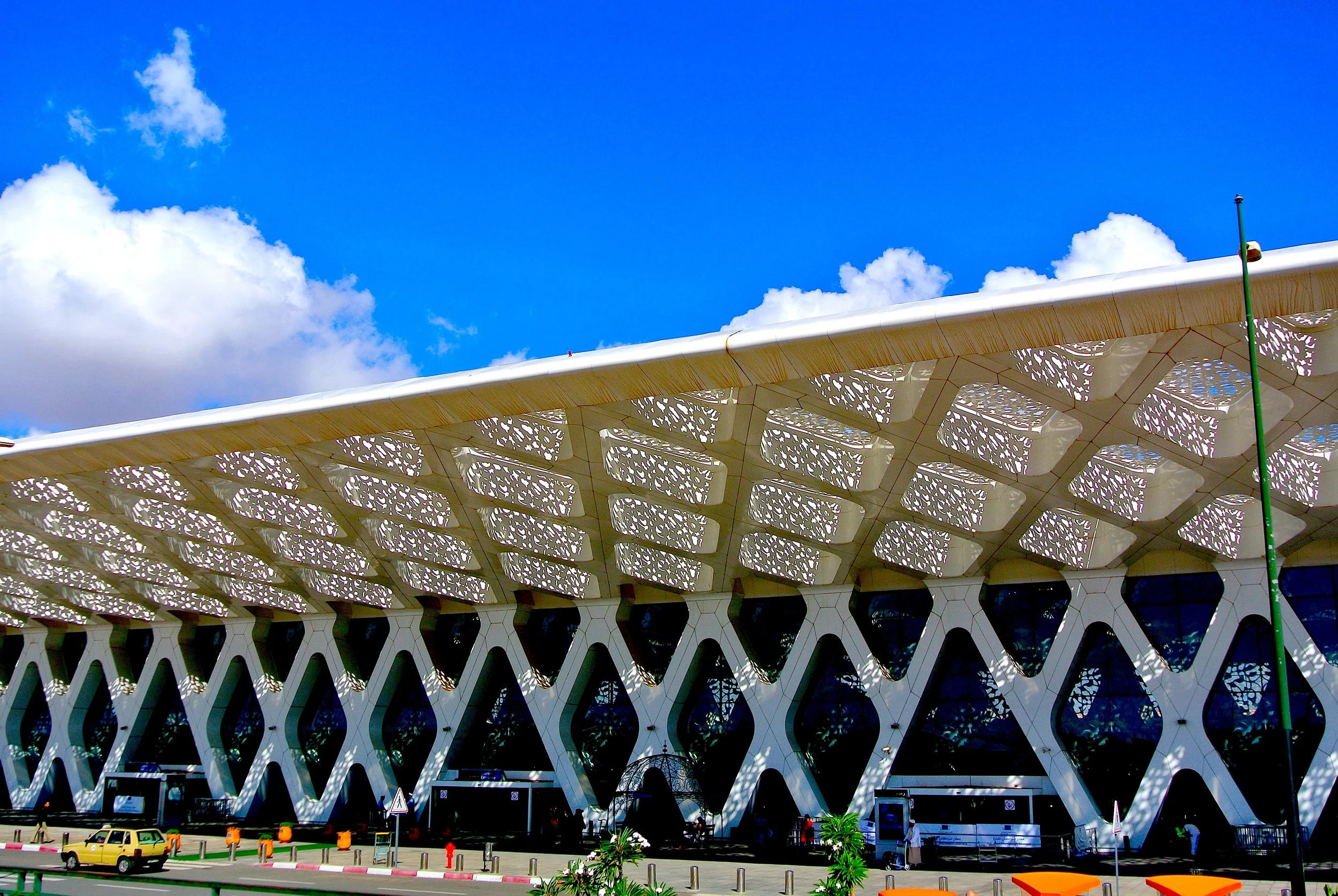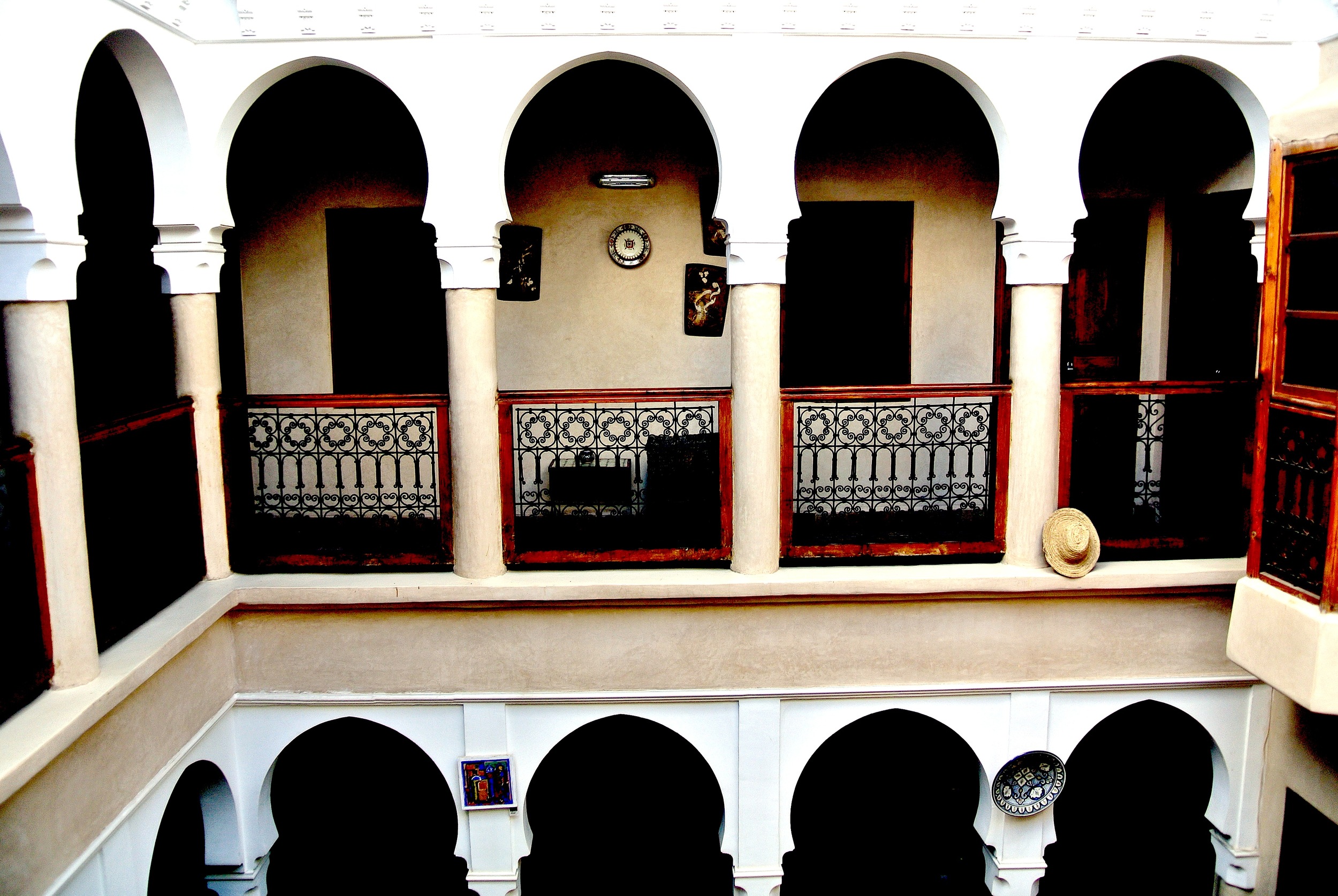The amazing tile and woodwork at the Bou Inania Medersa in Fès
Hire a guide and hit these cultural locations in the Fez medina.
We were only in Fès for a few days and knew it would be a challenge to navigate the labyrinthine medina on our own, so we decided to hire a guide. This was easy to coordinate through our guesthouse for our first day.
We were led from Riad Dar Bensouda by Hamid, a member of the riad staff, to a guide who awaited us outside the walled city. He introduced himself as Abdul and began the tour by asking us, “Are you ready to get lost?”
“He began the tour by asking us, “Are you ready to get lost?””
As we started our exploration, Abdul explained to us that Fès el Bali, the ancient walled medina, was established in 789 CE and is the largest car-free urban area in the world. Over 350,000 people live here, and it has been said that there are no less than 9,000 winding alleys.
Here are seven sights to see — all easily done in one day.
1. Bab Bou Jeloud
Bab Bou Jeloud, better known as the Blue Gate — the entrance to the bustling medina of Fès
The main western entrance to the medina, the monumental Bab Bou Jeloud, or Blue Gate, is in fact blue on one side and green on the other. Built in traditional Moorish style by the French in 1913, the bab (gate) is relatively young compared to the medieval city beyond. The tower of the Bou Inania Medersa is visible from the oversized keyhole-shaped central arch.
Its surface is blue, the color of Fès, elaborately ornamented with interlacing geometric patterns, calligraphy and floral motifs. The reverse side, which faces the medina, is green, the color of Islam.
One side of the so-called Blue Gate is actually green, to represent Islam
2. Bou Inania Medersa
The courtyard of the Islamic school, no longer in use
Primarily a residential college for local students, the medersa was an extension of the great university and mosque, once restricted to the study of theology, mathematics and astrology. It’s one of the few religious buildings in Fès that non-Muslims can enter.
The medersa's minaret as seen through an interior archway
Constructed by the Sultan Abou Inan between 1350 and 1355, it’s an excellent example of Marinid architecture and the only medersa to contain a minaret. The marble floors are original, and the central courtyard fountain used for ablutions still runs its water supply comes from the Fès River.
Our excellent guide, Abdul, standing in the medersa doorway
The mihrab, or prayer hall, has a dry moat, where water from the river once flowed and features stained glass panels.
The medersa prayer hall
A striking architectural element of the medersa is the refined mashrabiya screen, made of delicate turned wood, with an eight-pointed khatim star. The underlying principle of its design was to provide shade and ventilation while concealing the interior and its occupants without depriving a view of the outside. The intricate patterning is truly incredible. As many as 2,000 individual pieces of wood go into the making of a single square yard.
The screen at the medersa allows for privacy but also a peek at the outside world
3. Al Quaraouiyine (or Karaouine) University
A peek inside the oldest university in the world
The historic 9th century university is considered to be the oldest continuously functioning educational institution in the world. Since its origin, it has been a place of learning and religious study, attracting intellectuals and artists alike. We were fascinated to learn it was founded by a woman: Fatima al-Fihri, the daughter of a wealthy merchant from the town of Kairouan, Tunisia.
It was incorporated into Morocco's university system in 1963. Despite being founded by a woman, the institution did not admit women until the mid-20th century.
Originally founded as a mosque, this means as non-Muslims, we could only glimpse through its various doors.
The Al Quaraouiyine University contains a mosque — so it's not open to non-Muslims
The structure includes two chandeliers that were originally church bells from Andalusia.
4. Chouara Tannery
The tanneries are undergoing restoration, so you don't get to see the colorful dyes in the tubs — but you also don't get the awful smell
One of the sites we were most interested in seeing was the historic 11th century Chouara Tannery. Our guide had pointed out to us that Fès is undergoing a major architectural restoration funded by UNESCO, as many of its buildings are currently held in place with makeshift wooden trusses.
We were surprised to arrive at the tannery without that horrific smell hinting at its presence — typically the dyeing vats are filled with a mixture of water and pigeon poop to make the hides soft and supple. We climbed to the upper terrace where leather goods were being sold and gazed out onto the tannery, sad to discover that its large stone dyeing pits were empty.
5. Place Seffarine
You'll hear the clanging before you turn the corner upon Place Seffarine, the metalsmiths' souk
Recognizable by the reverberating sound of copper and brass being wrought and hammered, the metalsmithing soul of Fès is known as Place Seffarine.
A lone, wizened cork oak tree covered in gnarled burls, which I'd like to imagine as being centuries old, sits in the open square.
Place Seffarine, with its gnarled tree in its center, is one of the largest open public spaces in the medina
As the central marketplace for different types of items made from metal, it’s entertaining to watch the craftsmen as they work, pounding and shaping metal bowls.
“This would be a bad place to be if you had a headache,” Wally said.
6. The Water Clock
The Water Clock once chimed at the calls to prayer
Opposite the Bou Inania Medersa is the Dar al-Magana, with 12 windows above carved cedar beams. These are identical to the beams of the medersa, which extend out from the structure. It’s said that a magician created an elaborate hydraulic-powered clock that released a metal ball into one of the 12 brass bowls that sat atop the beams to chime out the five calls to prayer that structure each day.
When the Saadian dynasty replaced Merinid rulers and moved the capital to Marrakech, the clock stopped working — along with the mystery as to how it operated.
A foundation for the reconstruction of the medina’s monuments, Agence de développement et de réhabilitation de la ville de Fès (known by its acronym ADER-Fès), is restoring the clock — although it was not yet functioning on our visit.
7. The Philosopher’s Stone
Now a private residence, a small marble plaque outside denotes what was once the home of the great Jewish philosopher and physician Moshe ben Maimon (better known as Maimonodes). He lived in Fès in the 12th century, after fleeing Córdoba, Spain.
His 14-volume Mishneh Torah endures as an influential work in Jewish religious thought.
Note: The tourist attraction Cafe Clock is located at the end of this unassuming alley. –Duke
The popular tourist spot, Cafe Clock

